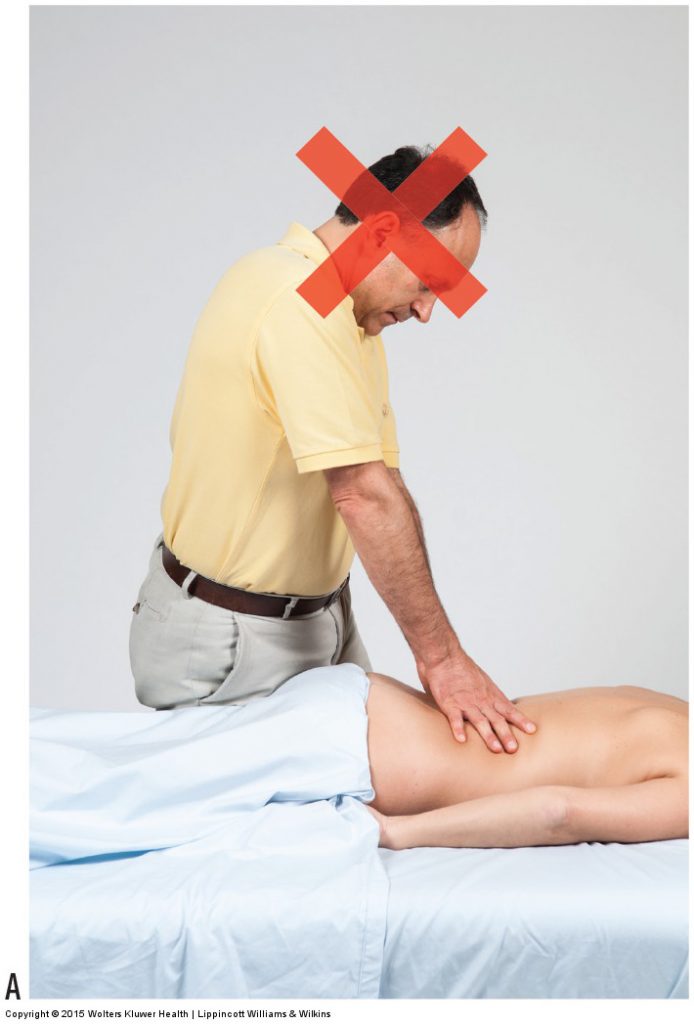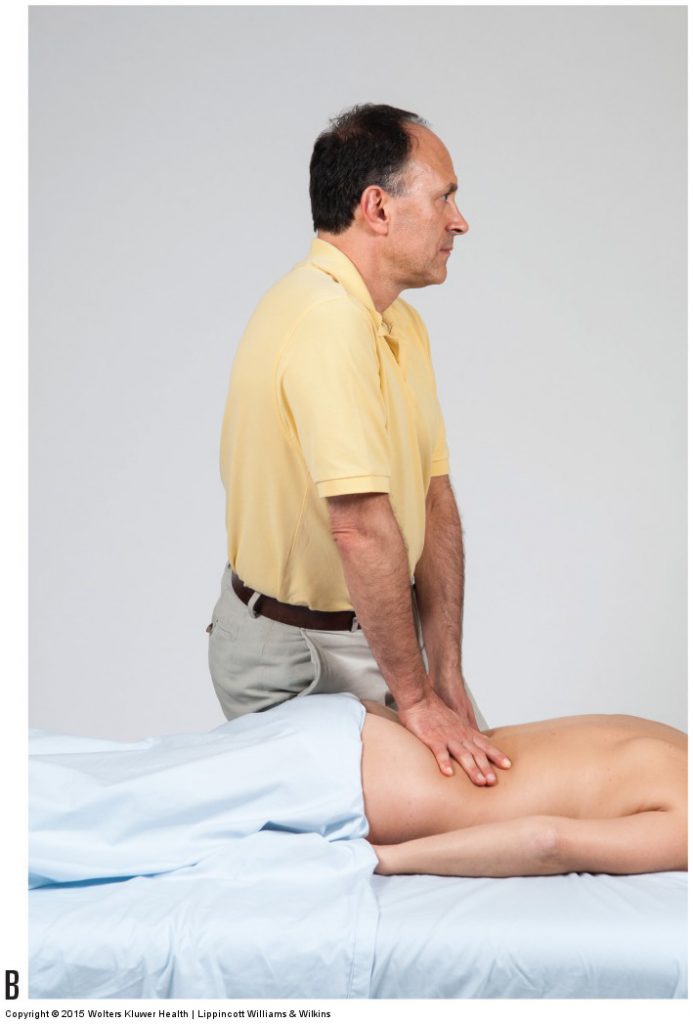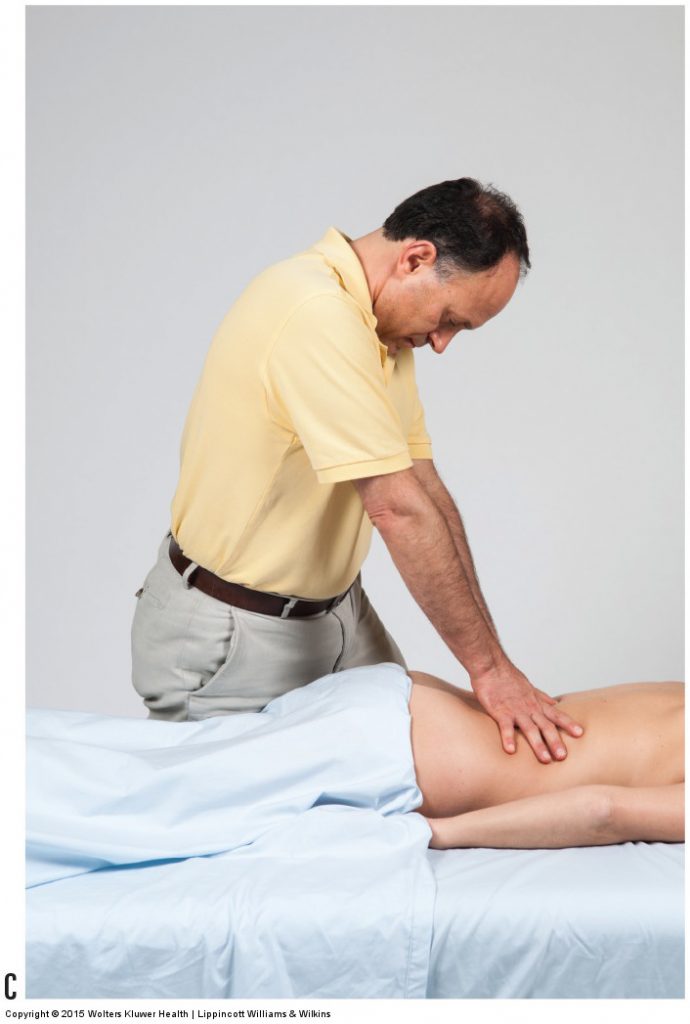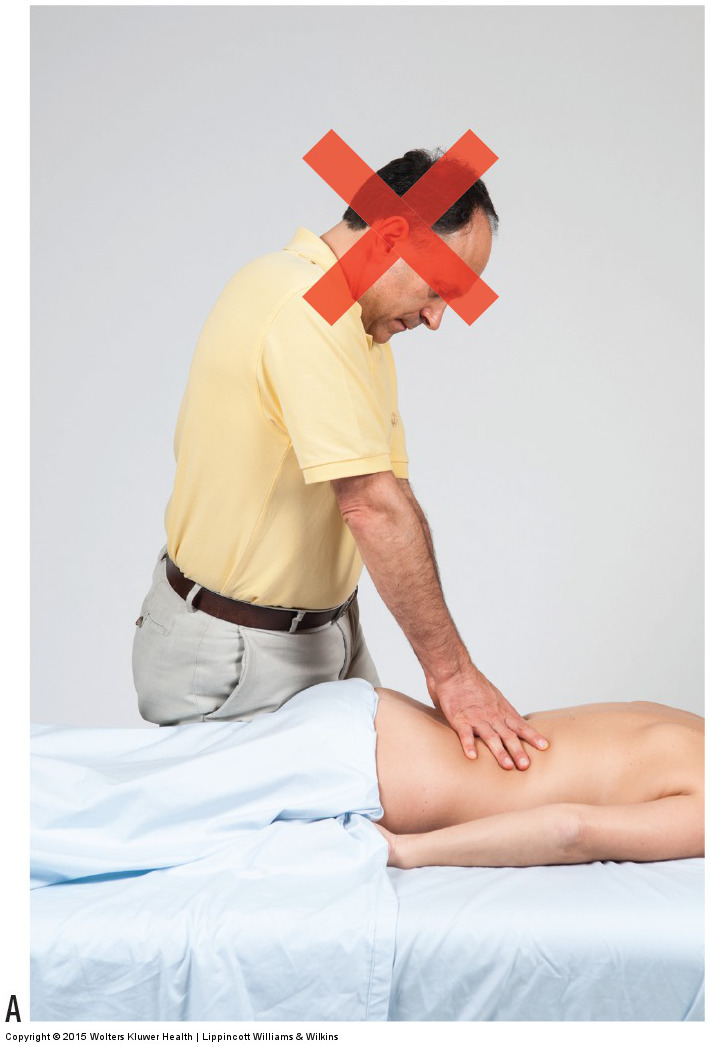This is the 13th in a series of 13 articles on Deep Pressure Massage Technique for the Low Back
Forward Head Posture

Figure 25. Posture of the head and neck. (A) Forward head posture, caused by flexing the head and neck to watch the stroke imbalances the head anteriorly, requiring isometric contraction of the posterior cervical extensor musculature. (B) Balanced posture of the head over the vertical trunk. (C) Relaxing the head and neck into flexion when working with the trunk inclined. Permission Joseph E. Muscolino. Manual Therapy for the Low Back and Pelvis – A Clinical Orthopedic Approach (2013).
The neck and head do not contribute to the generation of pressure, so head posture and neck posture should be whatever is most comfortable and least stressful. A common postural pattern that is stressful for the body is to flex the head and upper neck forward to watch the stroke that is being performed (Fig. 25A). This is often called forward head posture. This should be avoided as much as possible. It is rarely necessary to watch your strokes. And this forward head posture places your head in an imbalanced posture over thin air in front of your trunk, requiring posterior cervical extensor musculature to isometrically contract to hold this posture and prevent your head from falling into flexion until the chin hits the chest. The healthiest posture for the head and neck is to have the head balanced over the vertical trunk so that neck musculature does not have to contract to hold the head in position (Fig. 25B).

Figure 25B. Permission Joseph E. Muscolino. Manual Therapy for the Low Back and Pelvis – A Clinical Orthopedic Approach (2013).
If the Trunk is Not Vertical

Figure 25C. Permission Joseph E. Muscolino. Manual Therapy for the Low Back and Pelvis – A Clinical Orthopedic Approach (2013).
However, whenever the trunk is not vertical, for example, if it is inclined forward because you are reaching forward to perform a longer stroke, then this posture is not possible. In these cases, it is likely better to relax the head and neck and let the head rest in flexion with the chin at or near the chest (Fig. 25C). This affords the opportunity to close the eyes and visualize the structures that are being worked beneath the skin. Note: The only disadvantage to letting the head and neck drop into flexion is if this posture is habitually assumed, the fascial tissues of the posterior neck will gradually lengthen, resulting in less passive tension force to hold up the head and neck. In the long run, this could require greater work on the part of the extensor musculature of the neck.
This is the 13th of 13 articles on Deep Pressure Massage for the Low Back.
The thirteen articles are:
- Introduction to Deep Pressure Massage to the Low Back
- Deep Pressure Massage to the Low Back – Choosing the Right Table
- Deep Pressure Massage to the Low Back – Overview
- Deep Pressure Massage to the Low Back – Client and Therapist Positioning
- Deep Pressure Massage to the Low Back – Positioning the Feet
- Deep Pressure Massage to the Low Back – Choosing the Treatment Contact
- Deep Pressure Massage to the Low Back – Support Your Treatment Contact
- Deep Pressure Massage to the Low Back – Use Stacked Joints
- Deep Pressure Massage to the Low Back – Apply Pressure Perpendicularly
- Deep Pressure Massage to the Low Back – Use Body Weight
- Deep Pressure Massage to the Low Back – Tissue Tension Barrier
- Deep Pressure Massage to the Low Back – Deep Strokes
- Deep Pressure Massage to the Low Back – Forward Head Posture
(Click here for the blog post article: Forward Head Posture.)


